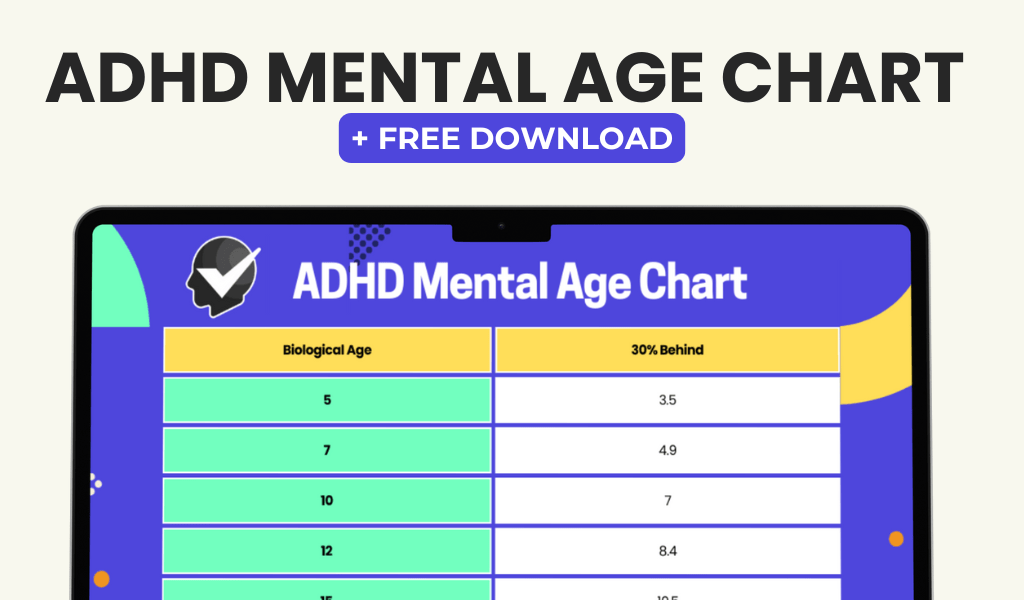ADHD, or Attention Deficit Hyperactivity Disorder, is a neurodevelopmental disorder that affects both children and adults. It is characterized by symptoms such as inattention, hyperactivity, and impulsivity. Diagnosing ADHD involves a comprehensive assessment that includes a thorough medical history, physical examination, and psychological evaluation. The process may also involve gathering information from parents, teachers, and other individuals who are familiar with the individual’s behavior. Additionally, various tests and rating scales may be used to assess the presence and severity of ADHD symptoms. These assessments help to rule out other possible causes of the symptoms and to determine the most appropriate treatment plan for the individual.
ADHD testing and diagnosis can be a complex and multifaceted process that requires the expertise of healthcare professionals such as psychologists, psychiatrists, pediatricians, and neurologists. It is important for individuals who suspect they or their loved ones may have ADHD to seek professional guidance and support in order to receive an accurate diagnosis and appropriate treatment. Early detection and intervention are crucial in managing ADHD symptoms and improving overall quality of life. With the right diagnosis, individuals with ADHD can access the resources and support they need to thrive in various aspects of their lives.
Key Takeaways
- ADHD testing and diagnosis involves a comprehensive evaluation of symptoms, medical history, and behavior patterns.
- The cerebellum plays a crucial role in ADHD, impacting attention, impulse control, and executive function.
- Cerebellum exercises, such as balance and coordination activities, can help boost focus and attention in individuals with ADHD.
- Incorporating cerebellum exercises into an ADHD workbook can provide structured and targeted support for managing symptoms.
- Tips for incorporating cerebellum exercises into daily routine include setting aside dedicated time for activities like yoga, dancing, or playing sports.
- Cerebellum exercises can offer benefits for ADHD, including improved coordination, balance, and cognitive function.
- Seeking professional guidance from a healthcare provider or therapist can help individuals with ADHD effectively incorporate cerebellum exercises into their treatment plan.
The Role of the Cerebellum in ADHD
The cerebellum is a region of the brain that is primarily associated with motor control and coordination. However, research has shown that the cerebellum also plays a significant role in cognitive functions such as attention, working memory, and executive function. In individuals with ADHD, abnormalities in the structure and function of the cerebellum have been observed, which may contribute to the characteristic symptoms of the disorder. The cerebellum is involved in regulating attention and impulse control, which are areas of difficulty for individuals with ADHD. Dysfunction in the cerebellum may lead to difficulties in maintaining focus, organizing tasks, and controlling impulsive behaviors.
Understanding the role of the cerebellum in ADHD is crucial for developing effective interventions and treatments for the disorder. By targeting the cerebellum through specific exercises and activities, it may be possible to improve cognitive functions and reduce ADHD symptoms. Research into the relationship between the cerebellum and ADHD is ongoing, and further insights into this connection may lead to innovative approaches for managing the disorder.
Cerebellum Exercises for Boosting Focus
Cerebellum exercises are designed to target the specific functions of this brain region, such as coordination, balance, and cognitive processing. These exercises can help improve focus, attention, and impulse control in individuals with ADHD. Some examples of cerebellum exercises include balance exercises, coordination drills, and activities that require precise timing and sequencing. These exercises engage the cerebellum and stimulate its function, which may lead to improvements in cognitive abilities that are essential for managing ADHD symptoms.
Incorporating cerebellum exercises into a daily routine can be beneficial for individuals with ADHD. These exercises can be enjoyable and engaging, making them an effective way to improve focus and attention while also promoting physical activity. By incorporating a variety of cerebellum exercises into a regular routine, individuals with ADHD can experience improvements in their ability to concentrate, organize tasks, and regulate their impulses.
Incorporating Cerebellum Exercises into an ADHD Workbook
| Exercise Type | Duration | Frequency | Benefits |
|---|---|---|---|
| Balance exercises | 10-15 minutes | 3 times a week | Improves coordination and focus |
| Coordination drills | 15-20 minutes | 2 times a week | Enhances motor skills and attention |
| Eye tracking exercises | 10-15 minutes | 4 times a week | Enhances visual processing and concentration |
An ADHD workbook that includes cerebellum exercises can be a valuable resource for individuals looking to manage their symptoms and improve their cognitive abilities. The workbook can provide a structured approach to incorporating cerebellum exercises into daily life, offering guidance on how to perform the exercises effectively and track progress over time. Additionally, the workbook can include information on the science behind cerebellum exercises and their potential benefits for individuals with ADHD.
Incorporating cerebellum exercises into an ADHD Workbook can provide a comprehensive approach to managing the disorder. By combining cognitive-behavioral strategies with targeted exercises that engage the cerebellum, individuals with ADHD can develop a holistic plan for improving their focus, attention, and impulse control. The workbook can serve as a practical tool for individuals to take an active role in managing their symptoms and enhancing their cognitive abilities.
Tips for Incorporating Cerebellum Exercises into Daily Routine
Incorporating cerebellum exercises into a daily routine can be a simple and effective way to improve focus and attention for individuals with ADHD. Some tips for integrating these exercises into daily life include setting aside dedicated time for practicing balance and coordination activities, incorporating movement breaks throughout the day to engage the cerebellum, and finding enjoyable activities that naturally stimulate the function of the cerebellum. Additionally, incorporating cerebellum exercises into daily routines can be made more effective by pairing them with cognitive-behavioral strategies such as mindfulness techniques or organizational tools.
By making cerebellum exercises a regular part of daily life, individuals with ADHD can experience improvements in their ability to focus, organize tasks, and regulate impulses. These exercises can be integrated into various settings such as home, school, or work, making them accessible for individuals of all ages. With consistency and dedication, incorporating cerebellum exercises into daily routines can lead to noticeable improvements in cognitive abilities and overall well-being.
The Benefits of Cerebellum Exercises for ADHD

Cerebellum exercises offer numerous benefits for individuals with ADHD. By targeting the specific functions of this brain region, these exercises can improve coordination, balance, and cognitive processing, leading to enhancements in focus, attention, and impulse control. Engaging in cerebellum exercises can also promote physical activity, which has been shown to have positive effects on cognitive function and overall well-being. Additionally, incorporating these exercises into daily routines can provide a structured approach to managing ADHD symptoms while also promoting a sense of accomplishment and self-efficacy.
The benefits of cerebellum exercises for ADHD extend beyond cognitive improvements. Engaging in these exercises can also provide opportunities for social interaction, enjoyment, and stress reduction. By incorporating a variety of cerebellum exercises into daily life, individuals with ADHD can experience improvements in their ability to concentrate, organize tasks, and regulate impulses while also enjoying the physical and mental benefits of engaging in these activities.
Seeking Professional Guidance for Cerebellum Exercises and ADHD
Seeking professional guidance for incorporating cerebellum exercises into an ADHD management plan is essential for ensuring safety and effectiveness. Healthcare professionals such as physical therapists, occupational therapists, or specialized trainers can provide personalized recommendations for cerebellum exercises based on an individual’s specific needs and abilities. Additionally, these professionals can offer guidance on how to integrate these exercises into daily routines in a way that complements other treatments or interventions for ADHD.
Professional guidance can also help individuals with ADHD track their progress with cerebellum exercises and make adjustments as needed to optimize their benefits. By working with healthcare professionals who have expertise in both ADHD management and cerebellum function, individuals can receive comprehensive support for improving their cognitive abilities and overall well-being. Seeking professional guidance for incorporating cerebellum exercises into an ADHD management plan can empower individuals to take an active role in managing their symptoms while also promoting their long-term success in various aspects of their lives.
In conclusion, understanding ADHD testing and diagnosis is crucial for identifying the disorder and developing appropriate treatment plans. The role of the cerebellum in ADHD highlights the potential benefits of targeting this brain region through specific exercises to improve cognitive functions. Incorporating cerebellum exercises into an ADHD workbook provides a structured approach to managing symptoms while promoting self-efficacy. Tips for integrating these exercises into daily routines offer practical strategies for improving focus and attention. The benefits of cerebellum exercises extend beyond cognitive improvements to include physical activity, social interaction, enjoyment, and stress reduction. Seeking professional guidance for incorporating these exercises into an ADHD management plan is essential for ensuring safety and effectiveness while optimizing their benefits.
Looking for more information on ADHD testing and treatment options? Check out this insightful article on ADHD Testing. It provides valuable insights into the importance of early diagnosis and the various methods available for testing ADHD. Understanding the role of the cerebellum in ADHD and exploring exercises to support its function is crucial, and this article offers a comprehensive overview of the topic. For further details, you can also read their blog post here.
FAQs
What is the cerebellum?
The cerebellum is a part of the brain located at the back of the skull, underneath the cerebral cortex. It is responsible for coordinating movement, balance, and posture.
What are cerebellum exercises for ADHD?
Cerebellum exercises for ADHD are activities that aim to stimulate and strengthen the cerebellum to improve attention, focus, and impulse control in individuals with ADHD.
What are some examples of cerebellum exercises for ADHD?
Examples of cerebellum exercises for ADHD include activities that involve coordination, balance, and rhythm, such as dancing, yoga, martial arts, and certain sports like tennis or basketball.
How do cerebellum exercises benefit individuals with ADHD?
Cerebellum exercises can benefit individuals with ADHD by improving their motor skills, coordination, and balance, which in turn can help enhance their attention, focus, and self-regulation.
Are cerebellum exercises a standalone treatment for ADHD?
Cerebellum exercises are not a standalone treatment for ADHD, but they can be used as a complementary approach alongside other interventions such as medication, therapy, and behavioral strategies.
Are cerebellum exercises suitable for all individuals with ADHD?
Cerebellum exercises may not be suitable for all individuals with ADHD, especially those with certain physical or medical conditions that may limit their ability to engage in physical activities. It is important to consult with a healthcare professional before starting any new exercise regimen.














